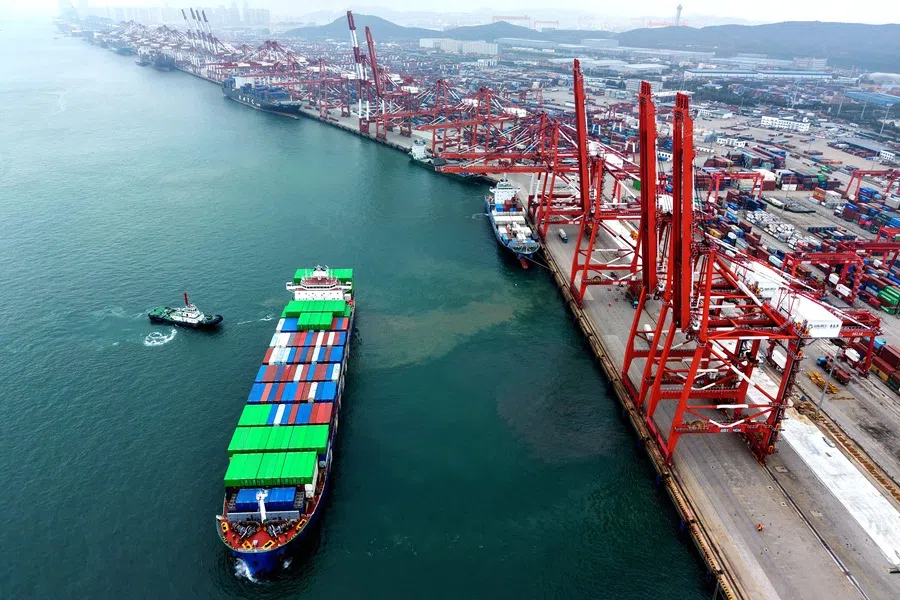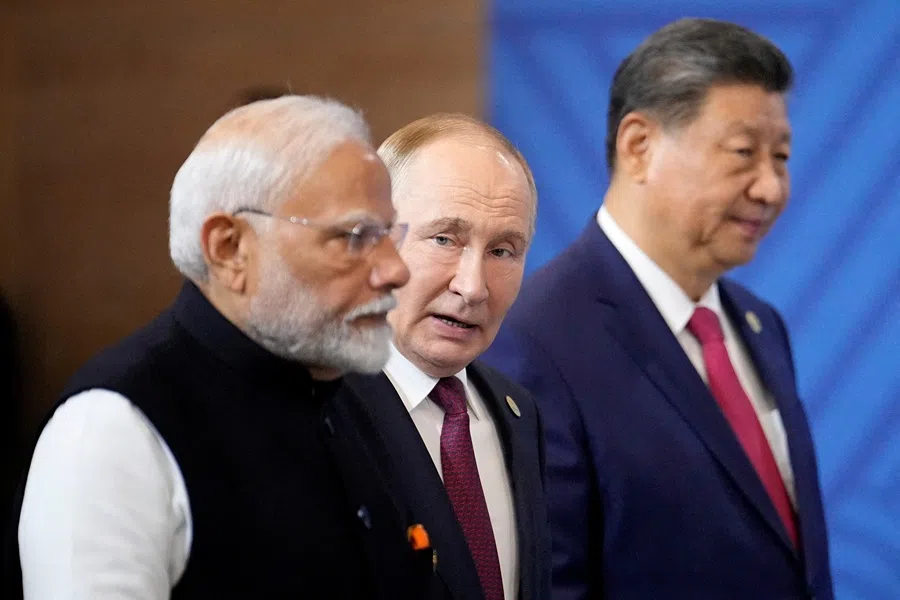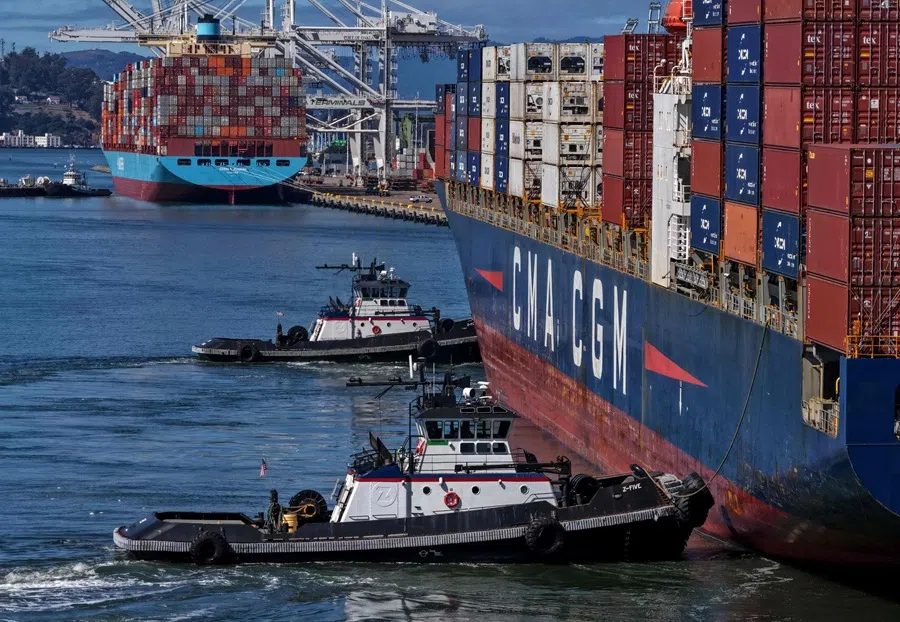風蕭蕭_Frank
以文會友全新博弈:中國重寫對美戰略
2025年10月13日
https://www.thinkchina.sg/politics/whole-new-game-china-rewrites-its-strategy-towards-us
顧慶陽,李光耀公共政策學院副教授
中國意識到,美國對華遏製並非暫時的政治姿態,而是華盛頓外交戰略的持續特征,因此自美國總統唐納德·特朗普第一任期以來,中國就已做好準備。顧慶陽學者指出,受外部環境變化和國內經濟複蘇需求的驅動,中國正在重塑交戰規則。
這組照片拍攝於2025年4月4日,從左至右依次為美國總統唐納德·特朗普(2025年4月3日)在佛羅裏達州邁阿密,以及中國國家主席習近平(2025年3月5日)在北京。
Mandel Ngan 和 Pedro Pardo/法新社)這組照片拍攝於2025年4月4日,從左至右依次為美國總統唐納德·特朗普(2025年4月3日)在佛羅裏達州邁阿密,以及中國國家主席習近平(2025年3月5日)在北京。(Mandel Ngan 和 Pedro Pardo/法新社)
十月的第一周,世界兩大強國呈現出截然不同的景象。在中國,國慶假期迎來了充滿節日氣氛和自信的氛圍;而在太平洋彼岸,美國則因黨派僵局導致的聯邦政府關門而陷入癱瘓。
這是兩個超級大國首次在同一時刻有效“暫停”——一個是出於選擇,另一個是出於失靈。然而,這種巧合背後隱藏著更深層的含義:中美戰略競爭已進入新階段。中國對美的姿態正從謹慎防禦轉向攻守兼備。
針鋒相對的貿易威脅
過去幾個月,雙方高級經濟和金融官員在歐洲舉行了四輪會談。會談被描述為建設性的,兩國政府都釋放了善意和緩和的信號。許多觀察人士認為這是一個充滿希望的信號,表明雙邊關係正在趨於穩定,尤其是在首爾亞太經合組織領導人峰會召開之際。
美國總統唐納德·特朗普和中國國家主席習近平預計將出席此次峰會。特朗普多次表達與習近平會晤的願望,甚至暗示可能達成一項“重大協議”,這加劇了全球對中美關係取得突破的預期。
然而,隨著中國“黃金周”假期結束,樂觀情緒迅速消退。北京宣布了一係列針對美國的新反製措施。商務部將幾家參與對台軍售的外國公司列入“不可靠實體清單”。稀土元素和其他關鍵原材料的出口受到管製。交通運輸部門公布了對運往美國的貨物和美國船隻征收的新運費。這些舉措標誌著北京罕見地展現了戰略自信,並揭示了中美競爭性質的變化。
這種急劇升級引發了分析人士的質疑:中國為何選擇此時此刻以如此強硬的方式作出回應?
2025年10月11日,一艘船停靠在中國東部山東省青島港的集裝箱碼頭。(法新社)
華盛頓立即做出了回應。特朗普總統威脅取消與習近平的會晤,並宣布將於下個月對中國進口產品加征100%的關稅。這一聲明在全球市場引發震蕩,再次暴露出全球經濟信心在地緣政治競爭麵前的脆弱性。
此次貿易戰的急劇升級引發了分析人士的質疑:中國為何選擇此時做出如此強硬的回應?要理解北京行動背後的邏輯,有必要回顧過去七年中美貿易衝突的演變。
中國的戰略準備
2018年特朗普政府首次發動貿易戰時,中國的反應迅速,但主要采取防禦性措施,力求控製損失並避免升級。但2025年的形勢截然不同。今年早些時候重返白宮後,特朗普再次啟動了更廣泛、更激進的關稅措施,不僅針對中國,還針對其他主要經濟體。然而,這一次,北京的準備要充分得多。
即使在喬·拜登擔任總統期間相對平靜的歲月裏,中國政策製定者也從未放鬆對兩國長期結構性緊張局勢的評估。他們得出結論,美國對華遏製已演變成一項兩黨合作且製度化的政策——這是華盛頓外交戰略的一個持續特征,而非暫時的政治姿態。
這些準備從根本上改變了中國在當前對抗中的地位。
北京現在比過去十年擁有更大的主動權和更大的回旋餘地。
為了應對這場持久的競爭,中國進行了三大戰略準備。首先,利用談判推遲實施新??的關稅,為國內經濟複蘇和產業升級爭取寶貴時間。其次,加快半導體、人工智能和可再生能源等戰略領域的技術自給自足,逐步減少對美國技術的依賴。第三,鞏固稀土和光伏等全球供應鏈關鍵行業的主導地位,從而增強自身影響力,並構建能夠遏製美國壓力的應對措施。
美國財政部長斯科特·貝森特、美國貿易代表傑米森·格裏爾、中國國際貿易談判代表兼商務部副部長李成鋼以及中國國務院副總理何立峰,準備在2025年5月10日於瑞士日內瓦舉行的中美雙邊會晤當天進行討論。
美國財政部長斯科特·貝森特、美國貿易代表傑米森·格裏爾、中國國際貿易談判代表兼商務部副部長李成鋼以及中國國務院副總理何立峰,準備在2025年5月10日於瑞士日內瓦舉行的中美雙邊會晤當天進行討論。
這些準備工作從根本上改變了中國在當前對抗中的立場。與過去十年相比,北京現在擁有更大的主動權和更大的回旋餘地。
中國最新的戰略調整反映了其世界觀的重大轉變。在過去二十年的大部分時間裏,中國尋求維持穩定,避免直接對抗,傾向於通過耐心和克製贏得戰略空間。但在經曆了多年的技術封鎖、金融限製和地緣政治包圍之後,中國領導人逐漸認識到,單純的妥協既無法贏得尊重,也無法確保國家安全。在長期的大國競爭中,隻有攻守兼備的戰略才能保持主動性和可信度。
外部環境的變化
這種重新調整有幾個潛在因素。
首先,國際力量對比正在微妙而穩步地發生變化。自疫情爆發以來,中國在產業複蘇和技術創新方麵展現出非凡的韌性,而美國則在日益加深的政治極化、不斷攀升的債務和社會分裂中苦苦掙紮。北京認為一個有利於自身的“機遇之窗”正在出現。
其次,日益不利的地緣政治環境迫使中國必須更早、更果斷地采取行動。日本領導層對台灣采取了更強硬的立場;一些歐洲國家已加入美國行列,限製對華技術轉讓;地區安全氛圍也變得更加不確定。在這種情況下,持續的被動隻會加劇中國的脆弱性。
第三,北京的國際支持基礎不斷擴大。以金磚國家和其他新興經濟體為首的全球南方國家的崛起,為中國提供了更廣闊的外交空間和道義支持。許多發展中國家理解甚至支持中國的立場,為北京與華盛頓的對抗提供了外部緩衝。
從北京的角度來看,當前形勢代表著一個“為和平而戰”的機會——通過堅定的行動表明,美國持續施壓的代價將超過相互妥協的代價。
2024年10月23日,印度總理納倫德拉·莫迪、俄羅斯總統弗拉基米爾·普京和中國國家主席習近平在俄羅斯喀山金磚國家峰會全體會議前合影留念。
2024年10月23日,印度總理納倫德拉·莫迪、俄羅斯總統弗拉基米爾·普京和中國國家主席習近平在俄羅斯喀山金磚國家峰會全體會議前合影留念。
與此同時,美國的政治兩極分化和經濟不確定性正在削弱其戰略一致性。隨著中期選舉的臨近,華盛頓的政策辯論越來越被國內競爭和短期考量所主導。這種內部幹擾降低了美國威懾的有效性,為中國主動出擊創造了機會。
因此,我們有理由認為,在中國民眾享受國慶假期之際,國家高層決策者正忙於敲定新的對美戰略。從北京的角度來看,當前時刻代表著一個“爭取和平”的機會——通過堅定的行動表明,美國持續施壓的代價將超過
需要相互妥協。
重塑交戰規則
這種“以衝突恢複平衡”的戰略並非升級對抗,而是重塑交戰規則。中國的核心目標是重建中美互動中的均勢,維護國家安全和科技主權,並為長期經濟發展創造更穩定的環境。因此,中國近期的行動不應被視為情緒化的報複,而應被視為精心策劃、有紀律的戰略反攻。
中國對美政策已超越謹慎防禦,進入攻守兼備、以實力求和平的新階段。
2025年10月10日,加利福尼亞州奧克蘭,一艘集裝箱船抵達奧克蘭港,拖船在空中為其提供協助。
因此,中國對美戰略邏輯發生了深刻的轉變。過去,中國通過克製積累實力;如今,中國則通過克製的自信尋求平衡。從被動適應到主動塑造的轉變,標誌著雙邊關係發展進入了一個新階段。
中國並非尋求全麵對抗,而是尋求力量的重新校準,迫使華盛頓重返談判桌——在新的力量平衡下重新定義“遊戲規則”。這意味著,未來的中美競爭將不再是簡單的支配與服從的等級製,而是一場更為複雜的、圍繞主動權、影響力和合法性的較量。
中國不再僅僅應對外部壓力,而是塑造自身的戰略環境。從這個意義上講,中國對美政策已超越謹慎防禦,進入攻守兼備、力求以實力求和平的新階段。
相關:特朗普的關稅戰旨在重塑全球秩序,但中國已做好準備 | 中美關稅戰的未來
A whole new game: China rewrites its strategy towards the US
13 OCT 2025
https://www.thinkchina.sg/politics/whole-new-game-china-rewrites-its-strategy-towards-us
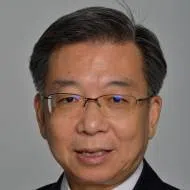
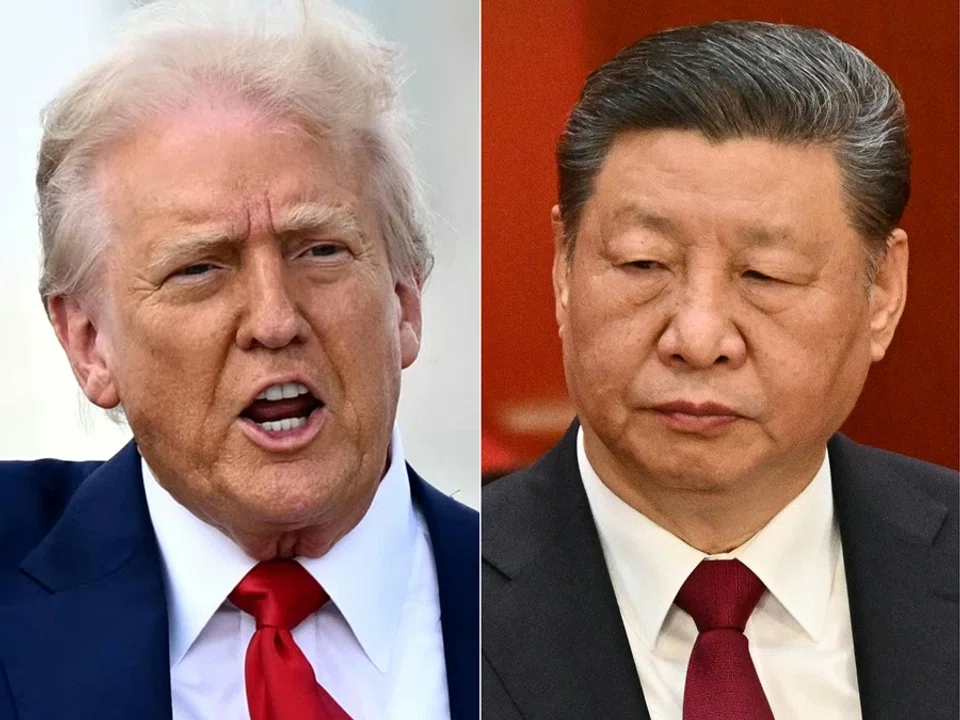 This combination of pictures created on 4 April 2025 shows, L-R, US President Donald Trump in Miami, Florida, on 3 April 2025 and China's President Xi Jinping in Beijing on 5 March 2025. (Mandel Ngan and Pedro Pardo/AFP)
This combination of pictures created on 4 April 2025 shows, L-R, US President Donald Trump in Miami, Florida, on 3 April 2025 and China's President Xi Jinping in Beijing on 5 March 2025. (Mandel Ngan and Pedro Pardo/AFP)It was the first time that both superpowers effectively “paused” at the same moment — one by choice, the other by dysfunction. Yet beyond this coincidence lies a deeper meaning: the strategic rivalry between China and the US has entered a new phase. China’s posture towards the US is shifting from a cautious and defensive stance to one that combines both defence and offence.
Tit-for-tat trade threats
Over the past few months, senior economic and financial officials from both sides held four rounds of talks in Europe. The discussions were described as constructive, with both governments sending signals of goodwill and moderation. Many observers took this as a hopeful sign that bilateral relations were stabilising, especially ahead of the APEC Leaders’ Summit in Seoul, which both US President Donald Trump and Chinese President Xi Jinping were expected to attend. Trump repeatedly expressed his desire to meet Xi and even hinted at the possibility of a “grand deal”, fuelling global expectations of a breakthrough.
However, optimism quickly faded after China’s “Golden Week” holiday ended. Beijing announced a series of new countermeasures targeting the US. The Ministry of Commerce placed several foreign companies involved in arms sales to Taiwan on its “unreliable entities list”. Export controls were imposed on rare earth elements and other critical raw materials. The transportation authorities unveiled new shipping fees on US-bound cargo and US-owned vessels. These actions signalled a rare show of strategic assertiveness from Beijing and revealed the changing nature of US-China competition.
This dramatic escalation has led analysts to ask: why did China choose this moment to respond in such an assertive manner?
A ship is moved into position at the container terminal of the port in Qingdao, in China’s eastern Shandong province on 11 October 2025. (AFP)
Washington’s response was immediate. President Trump threatened to cancel his planned meeting with Xi and declared that an additional 100% tariff on Chinese imports would take effect next month. The announcement sent shockwaves through global markets, once again exposing the fragility of global economic confidence in the face of geopolitical rivalry.
This dramatic escalation has led analysts to ask: why did China choose this moment to respond in such an assertive manner? To understand the logic behind Beijing’s actions, it is necessary to look back at the evolution of the US-China trade conflict over the past seven years.
China’s strategic preparations
When the Trump administration first launched the trade war in 2018, China’s response was swift but largely defensive, seeking to contain the damage and avoid escalation. But the situation in 2025 is markedly different. After returning to the White House earlier this year, Trump reignited tariff measures on a broader and more aggressive scale, targeting not only China but other major economies. This time, however, Beijing was far better prepared.
Even during the relatively calmer years of Joe Biden’s presidency, Chinese policymakers never relaxed their assessment of the long-term structural tensions between the two countries. They concluded that US containment of China had evolved into a bipartisan and institutionalised policy — a persistent feature of Washington’s foreign strategy rather than a temporary political gesture.
These preparations have fundamentally changed China’s position in the current confrontation. Beijing now has greater initiative and a wider margin for manoeuvre than it had over the past decade.
In anticipation of this enduring rivalry, China undertook three major strategic preparations. First, it used negotiations to delay the implementation of new tariffs, buying valuable time for domestic economic recovery and industrial upgrading. Second, it accelerated technological self-sufficiency in strategic sectors such as semiconductors, artificial intelligence and renewable energy, gradually reducing dependence on US technologies. Third, it strengthened its leverage by consolidating dominance in industries critical to global supply chains, including rare earths and photovoltaics, thereby building countermeasures capable of deterring US pressure.
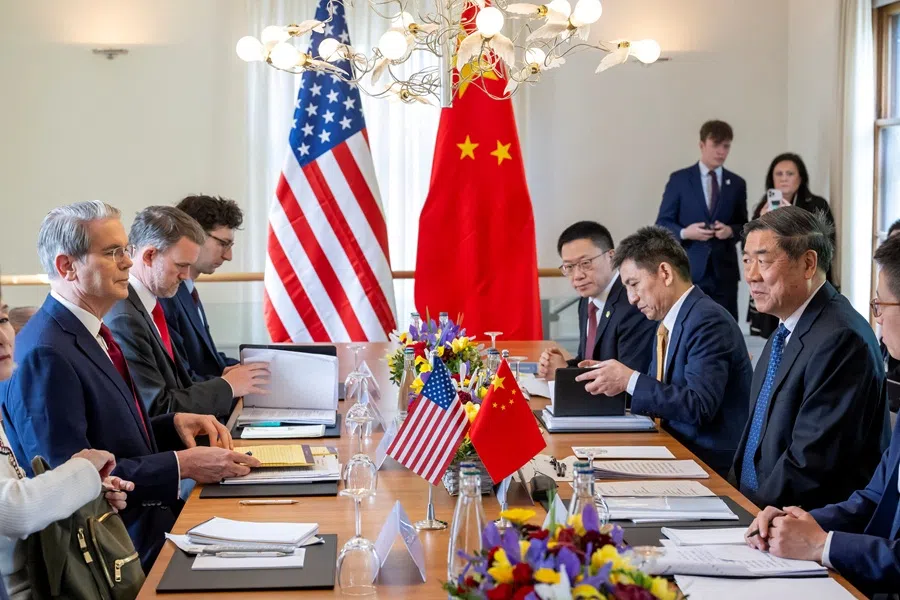
These preparations have fundamentally changed China’s position in the current confrontation. Beijing now has greater initiative and a wider margin for manoeuvre than it had over the past decade.
China’s latest strategic adjustment reflects a significant shift in its worldview. For much of the past two decades, China sought to maintain stability and avoid direct confrontation, preferring to win strategic space through patience and restraint. But after years of technology blockades, financial restrictions and geopolitical encirclement, Chinese leaders have become convinced that mere accommodation neither earns respect nor ensures national security. In a prolonged great-power competition, only a strategy that combines offence and defence can sustain initiative and credibility.
Shifts in external environment
Several underlying factors explain this recalibration.
First, the international balance of power is subtly but steadily shifting. Since the pandemic, China has demonstrated remarkable resilience in industrial recovery and technological innovation, while the US has struggled with deepening political polarisation, mounting debt and social fragmentation. Beijing sees a “window of opportunity” emerging in its favour.
Second, an increasingly adverse geopolitical environment has compelled China to act earlier and more decisively. Japan’s leadership has adopted a tougher stance on Taiwan; several European countries have joined the US in restricting technology transfers to China; and the regional security atmosphere has become more uncertain. In such circumstances, continued passivity would only amplify China’s vulnerabilities.
Third, Beijing’s international support base has expanded. The rise of the Global South — led by BRICS and other emerging economies — has given China broader diplomatic space and moral backing. Many developing countries view China’s position with understanding and even support, providing Beijing with an external buffer in its confrontation with Washington.
From Beijing’s perspective, the current moment represents an opportunity to “fight for peace” — to demonstrate through firm action that the cost of continued US pressure will exceed that of mutual compromise.
Indian Prime Minister Narendra Modi, Russian President Vladimir Putin and Chinese President Xi Jinping attend a family photo ceremony prior to the BRICS Summit plenary session in Kazan, Russia, 23 October 2024. (Alexander Zemlianichenko/Pool via Reuters)
At the same time, political polarisation and economic uncertainty in the US are weakening its strategic consistency. As the midterm elections approach, policy debates in Washington are increasingly dominated by domestic rivalries and short-term considerations. This internal distraction reduces the effectiveness of US deterrence, creating an opening for China to take the initiative.
It is therefore reasonable to assume that while China’s citizens enjoyed their National Day holiday, the country’s top decision-makers were busy finalising a new strategy towards the US. From Beijing’s perspective, the current moment represents an opportunity to “fight for peace” — to demonstrate through firm action that the cost of continued US pressure will exceed that of mutual compromise.
Reshaping the rules of engagement
This strategy of “using conflict to restore balance” is not about escalating confrontation, but about reshaping the rules of engagement. China’s core objectives are to re-establish parity in US-China interactions, to safeguard national security and technological sovereignty, and to secure a more stable environment for long-term economic development. China’s recent actions, therefore, should not be seen as emotional retaliation but as a calculated and disciplined strategic counteroffensive.
China’s approach to the US has moved beyond cautious defence into a new phase — one that integrates offence and defence, and seeks to achieve peace through strength.
In an aerial view, tugboats assist a container ship as it arrives at the Port of Oakland on 10 October 2025 in Oakland, California. (Justin Sullivan/Getty Images via AFP)
Hence, China’s strategic logic towards the US has undergone a profound transformation. In the past, China accumulated strength through restraint; today, it seeks equilibrium through controlled assertiveness. The transition from reactive adaptation to proactive shaping marks a new stage in the evolution of the bilateral relationship.
China does not seek total confrontation, but a recalibration of power that forces Washington back to the negotiating table — where the “rules of the game” can be redefined under a new balance of strength. This means that the future of US-China competition will no longer be a simple hierarchy of dominance and submission, but a more complex contest over initiative, influence and legitimacy.
China is no longer merely responding to external pressure but shaping the strategic environment itself. In this sense, China’s approach to the US has moved beyond cautious defence into a new phase — one that integrates offence and defence, and seeks to achieve peace through strength.




